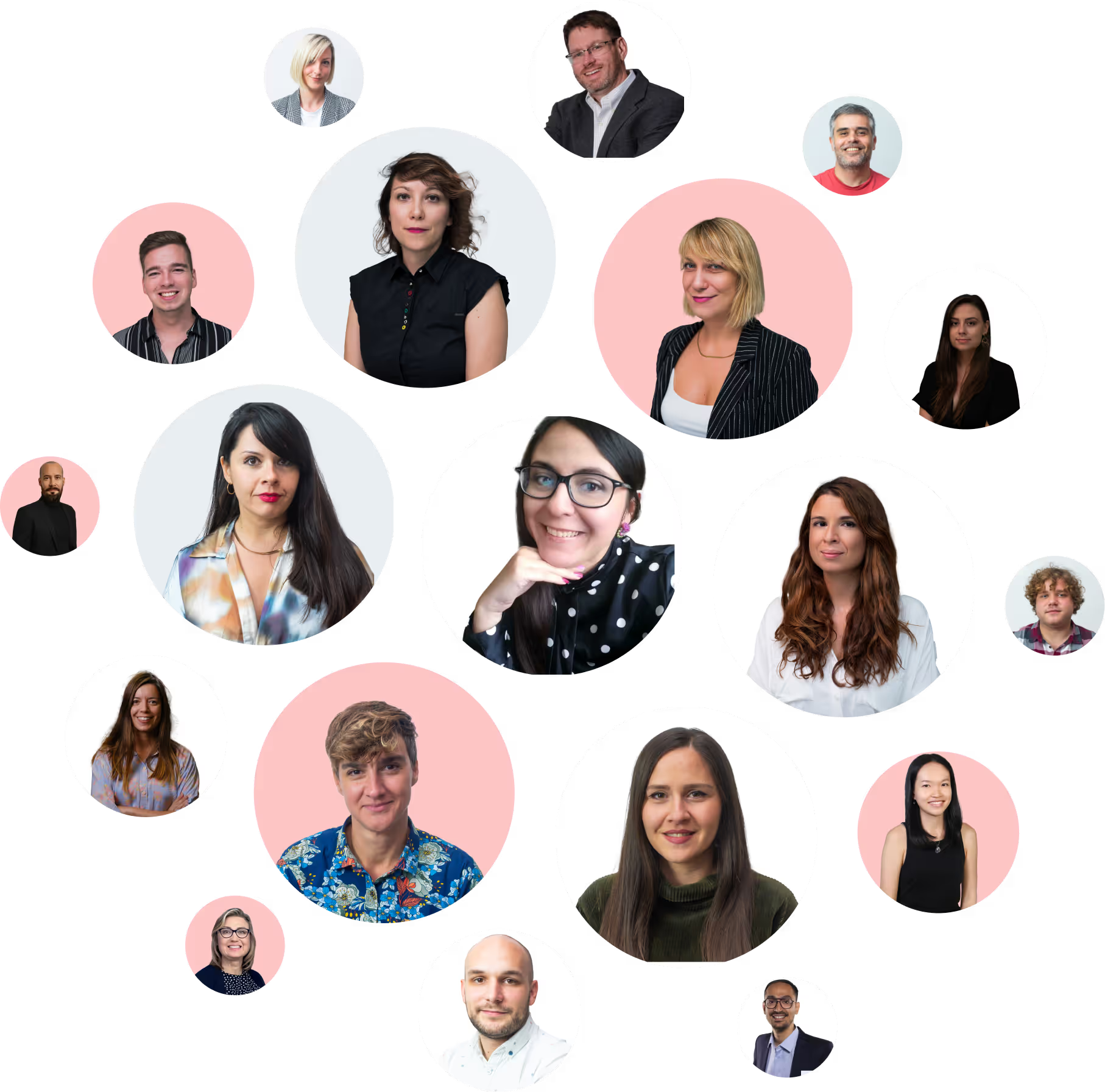.avif)
Agile tech team is a secret MR weapon
From the get-go, EyeSee's mantra was to make consumer insights accessible by jumping outside of the traditional research bounds and going completely online. Starting with a webcam-based eye tracking tool, all the way to today's custom virtual testing environments enabling the most predictive insights - our team of experts developed a whole different tech-enabled mindset that continues to guide our approach to research a decade later.
So, we sat down with Aleksandar Velikić, our Head of Growth, to understand how you keep the spark for innovation alive, what goes into empowering your team to grow further and unconventional ways to support organizational transformation:
What makes market research tech-enabled?
In a broader sense, a tech-enabled company is any company whose key output is technology, which bases its competitiveness on the use and innovation of tech and gathers experts.

From the very beginning, we have been utilizing tech to improve, speed up and make consumer research accessible at EyeSee. Exactly ten years ago, we developed an application within which we can map and monitor eye movements of study respondents via their computer webcams. This was a huge step forward in the industry - until then, it was necessary for respondents to personally come to a central testing location in order to be a part of a research project.
Studies for commercial clients became faster, and the quality of the results was improved due to the larger number of respondents being included by conducting research this way. For example, you can get an eye-tracking test and a report in about two weeks, while previously, such research would have taken up to several months.
After eye tracking, we developed other methods, such as facial coding and virtual shopping – and clients recognized this. Today we cooperate with global brands, such as Microsoft, Google, L'Oréal, Heinz Kraft, Danone, TikTok and others - all from several hubs in London, Paris, New York, Singapore, Mexico City, Ghent and Belgrade.
Our interdisciplinary R&D team is the second largest team at EyeSee, and as it turns out, even our more traditional competitors are slowly establishing the so-called automation or innovation teams as well!
How to reel in top-notch tech experts?
You draw in a tech-savvy workforce, like any other, with a human approach to work – provide proper working conditions and opportunities to be a part of exciting projects in which they see purpose and a chance to do something that will make a difference. Right now, paralyzing and demotivating myths about developers, such as exorbitant salary expectations, and the pressure on recruiters to "sell" the team or company to candidates, are circulating within the industry. These have proven to be quite harmful since it prevents us from considering the necessary conditions for tech experts and the new benefits we can offer them.
Three years ago, our technology team had only 3 developers, while today, there are about 30 members who work on the frontend and backend, we have a machine learning team, DevOps, a team of QA testers, several project leads and other experts trained to function according to agile, iterative principles. And in the future of EyeSee, this team will only continue to grow!

Therefore, you appeal by building a healthy company that reflects its attitude toward employees and has a non-toxic work culture. And if, along the way, you are offered to work on something thrilling, like eye tracking and facial coding, knowing that the fruits of your labor will interact with the world's biggest brands in the US, EU and APAC – I must say that it's not too bad of a deal!
How to retain them and stay competitive?
The post-pandemic time has pushed many to think in the direction of life changes. Our motto has always been: "Anyone who wants to explore other options should do it". We trust our colleagues that they can decide for themselves what is best for them at that moment, and it is up to us to constantly optimize the environment in which they work while members of our team. EyeSee, under the pressure of client demands and growth, is continuously being transformed organizationally. And so, many are motivated to change, grow and continue to stay in such a dynamic environment.
During organizational transformations, horizontal moves are also one of the ways in which employees get a chance to try something completely different. For example, throughout EyeSee's history, our colleagues have moved from creative teams to tech teams and vice versa, providing novelty and a different set of long-term business goals.
One of the tools we have been using since this year are retention interviews, during which we want to identify what it means the most to employees and why they are part of the team. To our surprise, many responses relate to conditions that have nothing to do with money – such as stress reduction, relief, human connections and support. Basically, our strategy is not to retain anyone but to move forward together - for some, this means staying at EyeSee, and for others moving to another environment. Both choices are correct.

Also, the average employee at EyeSee (27-33 years old) has "aged" in the past 10 years, so priorities change even at different ages. Juniors and younger people, perhaps, tend to lean more towards material means in the beginning, and later, when families are created, some non-monetary benefits, support, health and vacation days become significantly more important factors.
Want to read more about the practices that shaped EyeSee? Check out the 10 turning points that defined our approach to consumer research!










